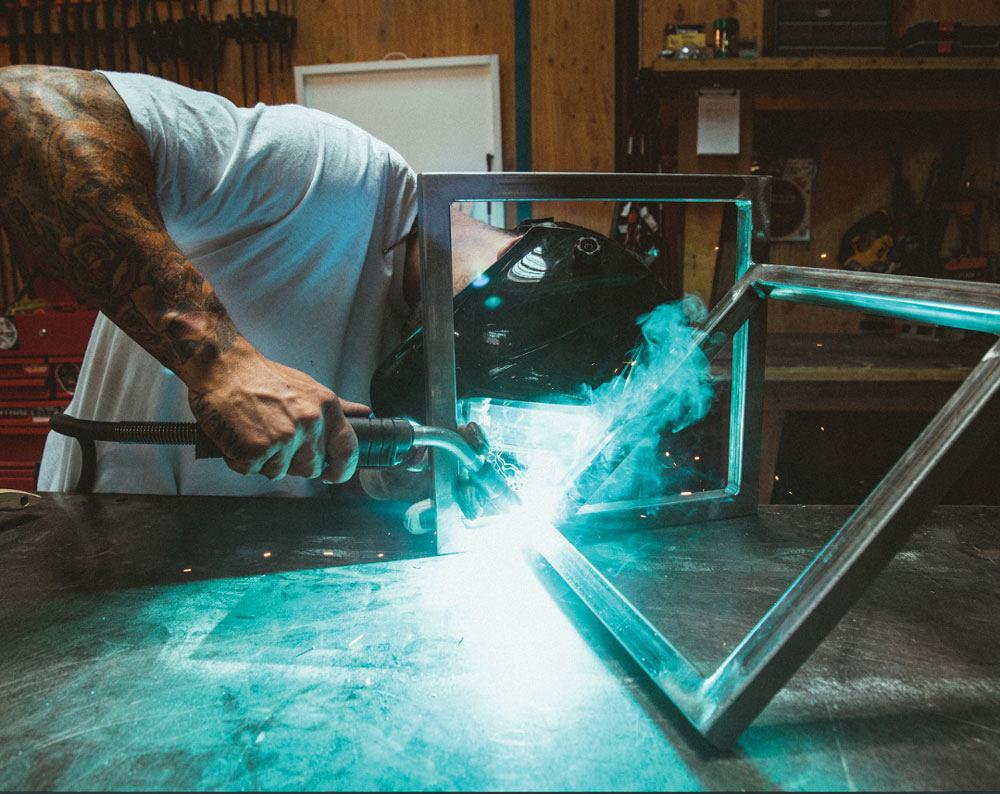Sales Representative
- FMA
- The Fabricator
- FABTECH
- Canadian Metalworking
MetalCraft Marine benefits with outsourced rubber fabrication
Boat-builder reduces shop waste through outsourced rubber fabrication
- By Sean Lillew
- August 6, 2019
- Article
- Fabricating
MetalCraft Marine of Kingston, Ont., manufactures high-speed aluminum boats that are used by fire crews, rescue patrols, and military personnel. The diesel engines that power these watercraft support top speeds but can be loud. To reduce noise from the engine bay, the boat-builder installs custom-fabricated acoustic insulation that’s made of different rubber materials.
Compared to fabricated metal products, industrial rubber products like this may seem to involve an inconsequential cost. Plus, some manufacturers assume they can fabricate rubber for less than they can buy finished gaskets. Yet companies like this aren’t accounting for shop waste. They’re not just ignoring scrap, they are adding labour costs and focusing the time and talents of employees on non-value-added production.
MetalCraft Marine, for instance, is expert at fitting and welding, but understands that the in-house fabrication of rubber products is time-consuming and can be inefficient. Before the company began buying outsourced acoustic insulation, it asked its fitters to fabricate and install these products. The results could be inconsistent.
“Some fitters were better at it than others,” said Project Manager Chris Toller. Welders also had to work with the fitters and show them where to add tabs. “There were a lot of little pieces to weld in place,” he said.
Welders weren’t the only higher-paid employees worrying about rubber insulation instead of metal parts. Project managers also needed to ensure that the acoustic insulation was cut cleanly and installed easily. At a a busy company, there’s an opportunity cost whenever employees can’t perform the tasks for which they’ve been trained. That’s especially true with welders, who are in high demand in today’s job market.
Fitters are also a source of talent, equally rare in the market, and are good at solving problems. At MetalCraft Marine, they used a cardboard template to measure and trace the acoustic insulation.
“They had to be very creative,” Toller said. With repeated use, however, the edges of a cardboard template become jagged. If the resulting cuts share these inconsistent contours, insulation may not mate cleanly with other parts such as panels.
Of course, employees can use jigs and fixtures with band saws and jig saws instead. Yet a simple miscut can result in the waste of an entire rubber sheet. Insulation can be nested during cutting to maximize material yield, but not every shop has the right equipment. MetalCraft Marine outsourced some cutting, for instance, but parts made of softer materials would arrive with scratches.
To reduce shop waste, increase operational efficiency, and secure defect-free rubber parts, the boat-builder hired Elasto Proxy, a rubber fabricator, to supply custom acoustic insulation. These rubber parts are cut with computer-controlled waterjet equipment and arrive in ready-to-use kits.
Before MetalCraft Marine outsourced its rubber fabrication, “the hardest part was the removable panel with bolt holes,” Toller said. With the waterjet-cut parts, however, openings for fasteners and even chamfered cuts are readily achievable. This cutting technique also creates smooth lines for acoustic insulation that mates snugly with panels and is free from gaps that can admit unwanted engine sounds.
In addition to reducing shop waste, waterjet cutting supports the use of multi-layer composites for acoustic insulation. In these sandwich-like structures, each rubber material provides particular properties. Manufacturers that aren’t familiar with rubber’s sound-dampening, blocking, or absorbing qualities can choose an off-the-shelf material instead, but it won’t optimize noise control.
To avoid material waste that’s caused by excessive ordering, MetalCraft Marine receives custom-packaged kits that contain all of the insulation that’s needed for a boat build. “When we order a kit from Elasto Proxy, it contains every part that we need – nothing more,” said Toller.
The boat-builder also reduces waste by using insulation that attaches with an adhesive. “When the kit arrives, we can complete our installation in a few hours instead of a couple of days,” Toller said. The labour savings is significant, he added, but the project manager also likes kitting’s repeatability and dependability. “We can repeat the kit over and over again with a really nice design,” he explained.
By choosing outsourced insulation instead of in-house fabrication, MetalCraft Marine is reducing shop waste while realizing other important business benefits. Welders can weld, fitters can fit, and the insulation the boat-builder installs underscores the quality of its products. “We looked for a solution for a long time,” Toller said. They finally found one.
Sean Lillew is a sales representative for Elasto Proxy in Newmarket, Ont., and works closely with MetalCraft Marine. He can be reached at slillew@elastoproxy.com.
About the Author
subscribe now


Keep up to date with the latest news, events, and technology for all things metal from our pair of monthly magazines written specifically for Canadian manufacturers!
Start Your Free Subscription- Trending Articles
Aluminum MIG welding wire upgraded with a proprietary and patented surface treatment technology

CWB Group launches full-cycle assessment and training program

Achieving success with mechanized plasma cutting

Hypertherm Associates partners with Rapyuta Robotics

Brushless copper tubing cutter adjusts to ODs up to 2-1/8 in.

- Industry Events
MME Winnipeg
- April 30, 2024
- Winnipeg, ON Canada
CTMA Economic Uncertainty: Helping You Navigate Windsor Seminar
- April 30, 2024
- Windsor, ON Canada
CTMA Economic Uncertainty: Helping You Navigate Kitchener Seminar
- May 2, 2024
- Kitchener, ON Canada
Automate 2024
- May 6 - 9, 2024
- Chicago, IL
ANCA Open House
- May 7 - 8, 2024
- Wixom, MI
















